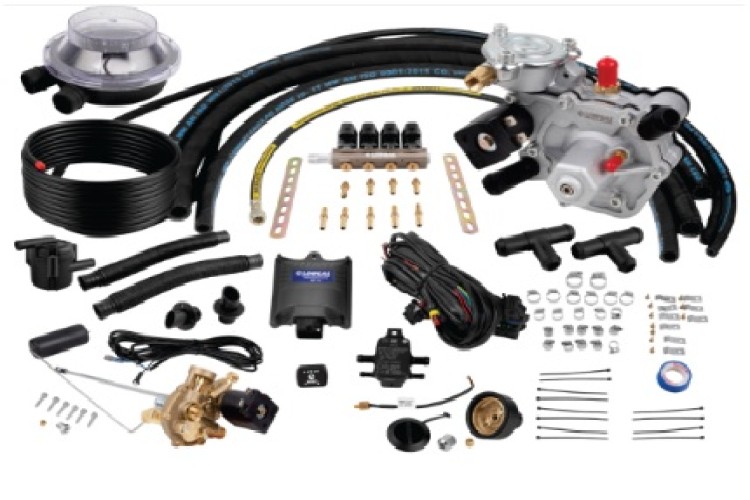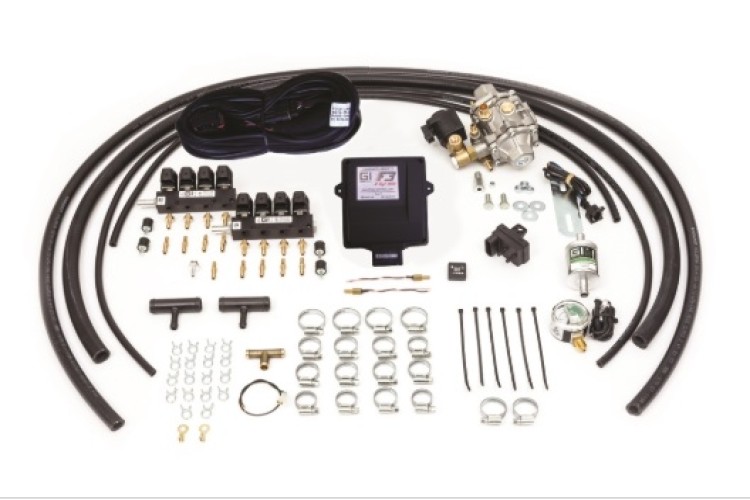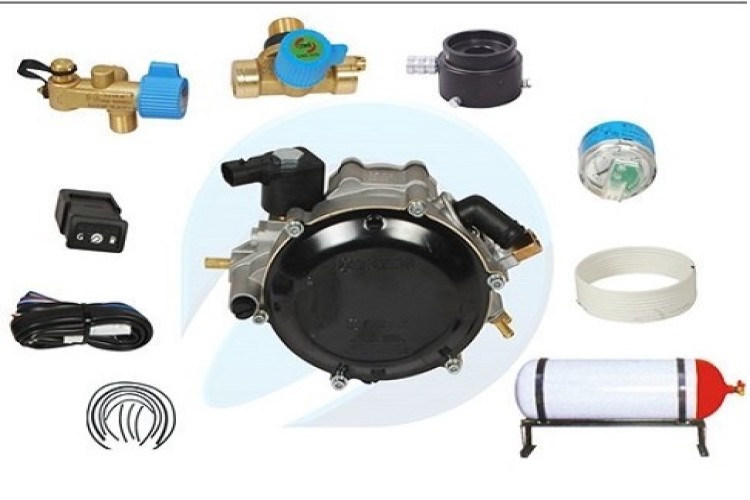
TRADITIONAL LPG KIT
Components of Traditional / Conventional LPG Conversion Kit
1. LPG Tank (Cylinder)
- Stores LPG in liquid form under pressure.
- Usually made of steel or composite materials.
- Includes a multivalve for safety (contains fill limiter, pressure relief, and shut-off functions).
2. Multivalve (Tank Valve)
- Mounted on the LPG tank.
- Includes:
- Filling valve (for refueling).
- 80% stop-fill device (prevents overfilling).
- Pressure relief valve (safety feature).
- Liquid and vapor outlets (for feeding the system).
3. Reducer/Vaporizer
- Converts liquid LPG into vapor by using engine coolant heat.
- Regulates gas pressure before it enters the injectors.
- 4. Mixture
- An air LPG Vapor Mixture is used in Traditional LPG Conversion system
6. Fuel Selector Switch
- Allows the driver to switch between Petrol and LPG modes.
- Often includes an LED display showing fuel level and mode.
7. LPG Filter
- Cleans the gas before it enters the reducer/injectors.
- Prevents impurities from damaging the system.
8. Filling Point (Refueling Connector)
- External nozzle for refueling LPG at gas stations.
- Usually mounted near the petrol filler.
9. Pipelines & Hoses
- High-pressure lines (from tank to reducer).
- Low-pressure lines (from reducer to injectors).
- Must be LPG-rated for safety.
10. Petrol Solenoid Valve (Bi-Fuel Systems)
- Cuts off petrol supply when running on LPG.
- Prevents backflow and fuel mixing.
11. LPG Solenoid Valve
- Mounted on the tank or near the reducer.
- Shuts off LPG flow when the engine is off or running on petrol.
A traditional or conventional LPG conversion kit, also known as a mixer-type kit, is an older and simpler system used to convert petrol engines to run on liquefied petroleum gas (LPG). In this setup, LPG is mixed with air before entering the engine through a mixer installed in the intake manifold. The fuel flow is controlled mechanically, usually through a gas regulator and a manual switch, without the precision of modern electronic systems. While these kits are relatively low-cost and easy to install, they offer less accurate fuel-air mixture control, which can lead to reduced engine performance and fuel efficiency compared to sequential systems. Traditional LPG kits are generally more suitable for older vehicles with carburetor-based engines rather than modern fuel-injected ones.




